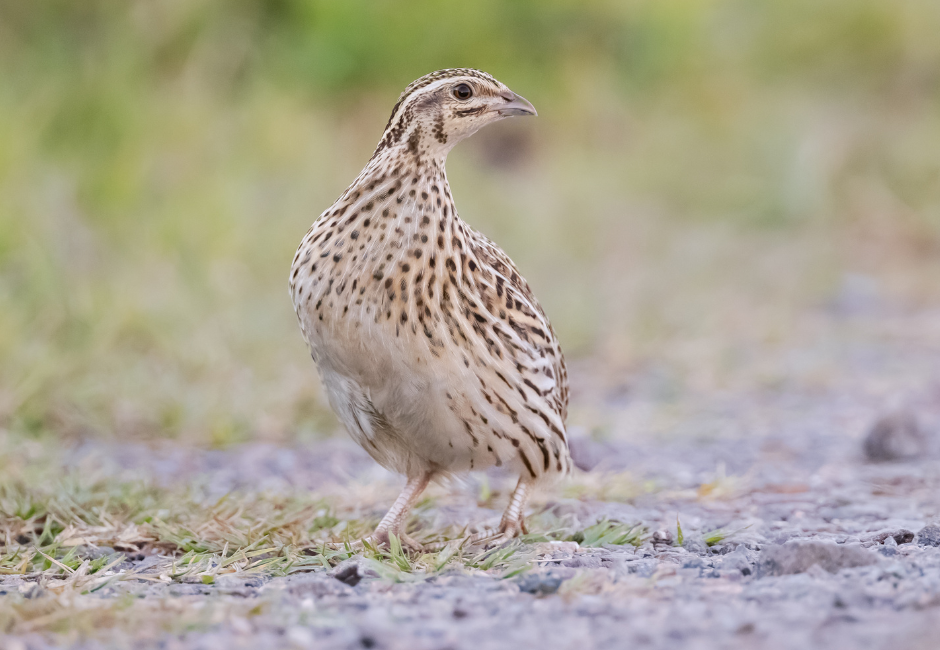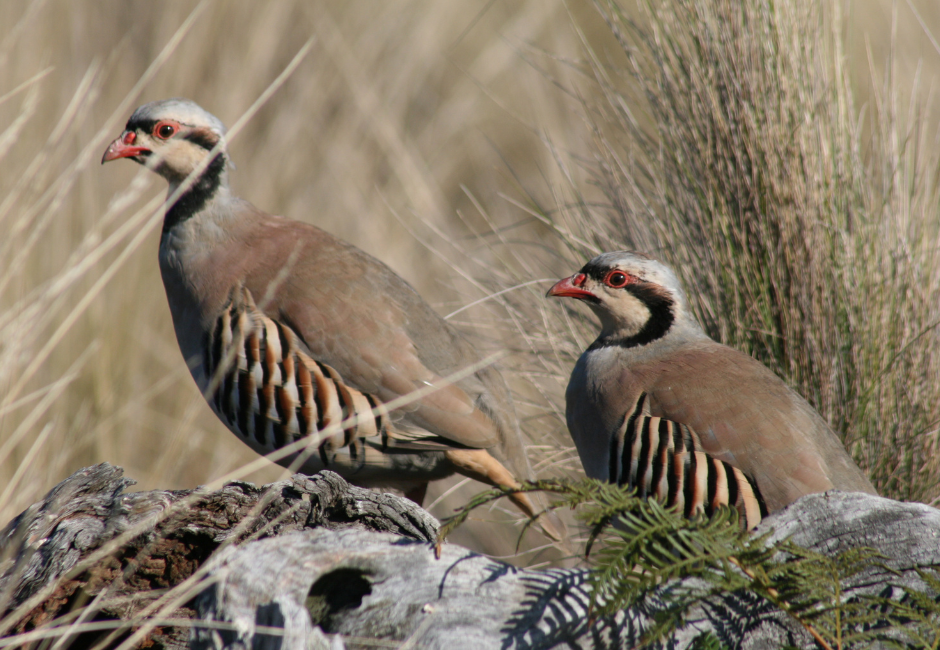Quail and introduced gamebird hunting education
The Stubble Quail is the most common native quail species in Australia, and is the only quail species that can be legally hunted in Victoria. Stubble Quail may only be hunted during the open season. There is a daily bag limit and specific laws that apply to hunting methods and retrieval.
The information contained in the Quail and introduced gamebirds education module is based on Victoria’s legislated hunting seasons. The season arrangements may change each year. Hunters should regularly check the Stubble Quail hunting page for more information.
Most Stubble Quail hunting occurs on private property. There are also 16 State Game Reserves that allow the hunting of Stubble Quail during the open season.
All species of pheasant and partridge, European, Japanese and Californian Quail are introduced game birds and may be hunted in Victoria throughout the year on public and private property. Introduced game bird hunting generally occurs on private licenced commercial game bird farms.
The Be a better game bird hunter - Shotgunning Education Program Handbook and the Quail and introduced game birds education modules have information on hunting Stubble Quail and Introduced Gamebirds, including illustrations, diagrams and videos.
Equipment
Stubble Quail and introduced game bird hunters are only permitted to use shotguns, which must be no greater than 12 gauge and with no more than three barrels. Hunters are required to use non-toxic shot only. Non-toxic shot options are listed in Schedule 6 of the Wildlife (Game) Regulations 2024.
Chokes and loads
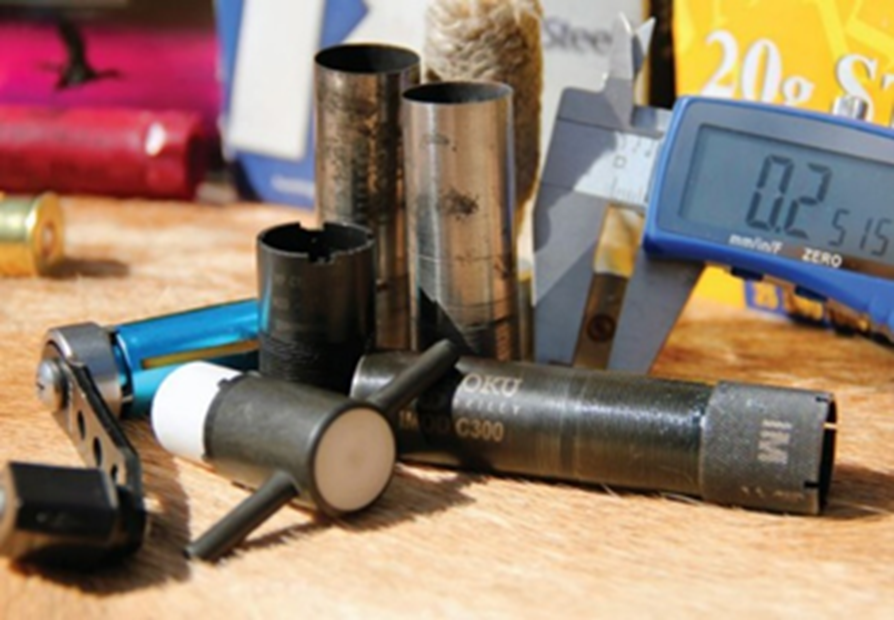 Different birds have different body sizes and types, and these factors may change the choke and shotshell combination required.
Different birds have different body sizes and types, and these factors may change the choke and shotshell combination required.
A common mistake made by many game bird hunters is the incorrect identification of shot size/s. This affects their ability to meet minimum patterning and penetration requirements. It is important to understand that the shot size coding/labelling given for one cartridge brand may not be the same as that given for another.
Check out the Shooting skills section of the Quail and introduced game birds education module for more information on selecting choke and shotshell combinations.
Tom Rosters lethality table below can be used to identify the shooting range and recommended shot size.
Lethality Table
Tom Roster’s Nontoxic Shot Lethality Table Adapted to Australian Game Birds provides important, evidence-based guidance on shot size, choke and load selections to effectively harvest Australian game birds. The Table provides minimum pattern counts (i.e. the number of pellets in a 30-inch circle) needed to achieve clean kills. This information is critical when pattern testing to select the best choke and load combinations for a shotgun.
Tom Roster’s Nontoxic Shot Lethality Table Adapted to Australian Game Birds summarises Tom Roster’s analyses at the time of publication of the waterfowl and upland game bird lethality data bases for 15 published U.S. steel versus lead shooting tests. It also includes birds taken for published HEVI-Shot and bismuth shot ballistics, and lethality reports he has authored for ammunition companies and/or the CONSEP organisation.
Understanding your equipment and how it performs is critical to being a responsible gamebird hunter. With the most effective load and choke combination and regular practice, you’ll be more successful in the field and REDUCE Wounding.
Note: Bismuth shot sizes for quail are the smallest bismuth pellets currently manufactured.
Pattern testing
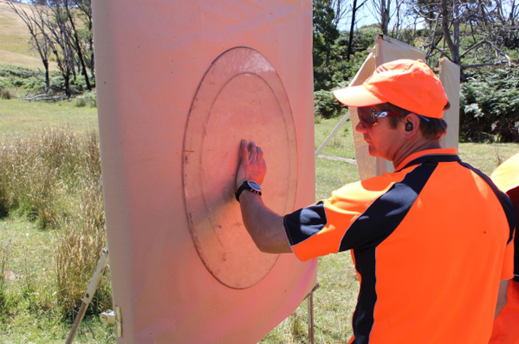 Pattern testing involves shooting a specific barrel, choke, and shotshell combination at a target to see and record the number and spread of pellets. Pattern testing ensures that the choke and load combination is suitable for the species being hunted and the performance of the shotgun.
Pattern testing involves shooting a specific barrel, choke, and shotshell combination at a target to see and record the number and spread of pellets. Pattern testing ensures that the choke and load combination is suitable for the species being hunted and the performance of the shotgun.
Tom Rosters lethality table on page 14 of the Be a better gamebird hunter - Shotgunning Education Program Handbook can be used to find the best combination and most desirable pattern density.
For information on pattern testing, check out the Shooting skills section of the Quail and introduced gamebirds education module.
Shooting skills
Extensive knowledge, skills and experience are required to become a successful hunter. Hunters should know their maximum shooting skills distance and practice regularly to increase their success rate and significantly reduce game bird wounding .
Effective shooting skills distance
An effective shooting skills distance is the greatest distance where a hunter can consistently hit six out of eight targets. The Effective shooting skills and Range estimation sections of the Quail and introduced gamebirds education module has a video outlining the steps hunters can take to know their maximum shooting distance and help reduce wounding.
Practise
The best way to develop and maintain proficient shooting skills is through regular and meaningful clay target shooting practise in situations that replicate field conditions.
To practise for field hunting situations, clay targets must be presented in a way that accurately (within reason) simulates the typical speed and trajectory of the game bird being hunted.
Check out the Shooting skills section of the Quail and introduced game birds and hunting basics education modules.
Retrieval and dispatch
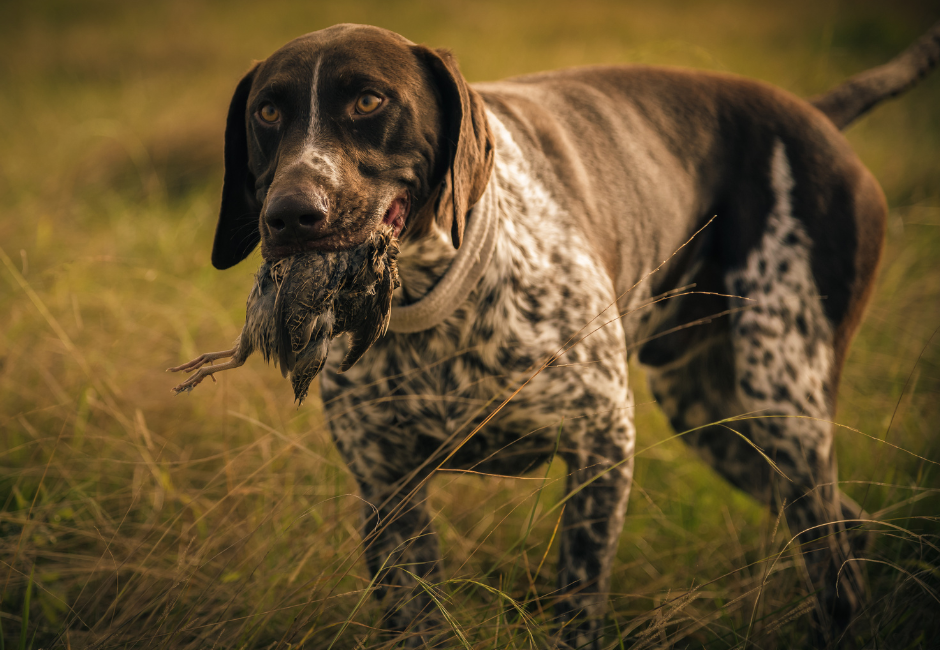 Hunters need to be aware of their legal obligations to make all reasonable attempts to immediately recover a downed game bird and their obligations to recover at least the breast meat from every bird.
Hunters need to be aware of their legal obligations to make all reasonable attempts to immediately recover a downed game bird and their obligations to recover at least the breast meat from every bird.
Once a bird is shot, hunters need to stop shooting and find the struck bird. Hunters must not shoot at any other birds until they have made all reasonable attempts to retrieve the one that was struck.
Check out the Retrieval and dispatch section of the Quail and introduced game birds hunting basics hunting education module for information on how to humanely dispatch downed gamebirds .
Page last updated: 27 Feb 2025
